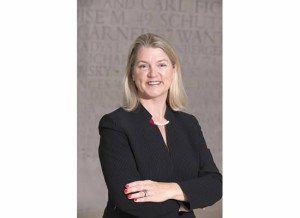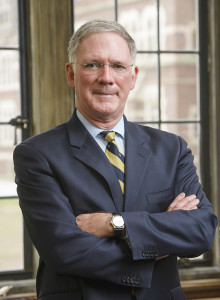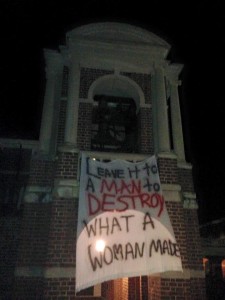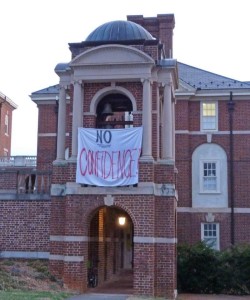The President and Board of Sweet Briar College announced on March 3, 2015 its intention to close. Since that time, the actions and culture of this Board have revealed themselves shedding troubling light into the dark shadows of the Board’s governance (or lack thereof). It is important for all who care about their schools, colleges, universities and nonprofits to understand how their Board operates and governs.
Types of Boards — Definitions
Governing Board. A governing board leads the organization from the top. They are responsible for articulating the organizational mission and executing plans as well as monitoring the effectiveness of programs. The also have the authority to recruit, hire, evaluate and terminate the President or Executive Director of an organization. Finally, they serve as a fiduciary of the fiscal health of the organization.
Who serves on a governing board is determined by the type of board it is:
Shared Governance Institutions that have a shared governance model include the voices and leadership of stakeholder groups on the Board. A leader from each constituency group has a “seat” on the Board and participates in decision making. In a College or University, this means that the head of the official student, faculty, staff, parent and other key groups would sit on the board. In addition, “at large” members may be recruited from those groups or the wider community.
Self Replicating A self replicating Board replenishes itself by a nominating group within the Board. Usually, this is a Nominating Committee. If there is an Executive Committee, that group sometimes has a role in nominating. Ideally, the entire board is canvassed for suggestions for new members. Board members meet with potential candidates and their names are put forward for nominating committee review. The up-side of this model is that the Board has a pipeline of candidates. The down-side is that the board can become insular as people tend to reach out to people they know and who share a similar point of view. Diversity of all types becomes threatened in this model (not to mention solid decision making)
Advisory Boards. Advisory Boards provide industry expertise to academic programs. In many institutions, they review curriculum to make sure that what is being taught is in line with what job requirements are after graduation for jobs hiring in the field. John McElroy, PhD, CFLE and Linda Dove, MS, ZA, Western Michigan University in an excellent paper on Advisory Boards describe them as follows,
“..Their main function is to offer support to institution administrators and faculty….comprised of accomplished experts offering innovative advice and dynamic perspectives….can provide strategic direction, guide quality improvement, and assess program effectiveness.”
Sweet Briar College Board of Directors
In the case of Sweet Briar College, they have a self replicating Board which does not consist of constituency group leaders officially. The majority of the Board are alumnae. As the Board does not share its Minutes or documents, the only glimpses we get into their operations are their own statements as well as statements by former members. The President’s own words describe the decision-making process as a small group of people:
“The board, some key alumnae and I have worked diligently to find a solution to the challenges Sweet Briar faces….”
One member of the Board, Richard E. Leslie, who felt pressure to resign because his ideas and opinions seems to run counter to the “Executive Leadership” gives us a frightening glimpse into the current culture of the Board. He contrasts the current operating of the Board to his past experience prior to Rice, the current board chair:
During my early years of my seven year tenure the board had vital and rigorous discussions on most issues before reaching consensus.
Fiscal restraint and enrollment increase ideas were monitored and discussed at every meeting. Times have changed. Now I must add my name to the list of directors departing before the end of their terms.
Most disturbing is that he states that differences of opinion were not tolerated by the Executive Leadership of the Board.
Each time I tried to argue for fiscal prudence, I was denigrated or ignored.
This is not a sign of healthy board deliberations. Mr. Leslie was trying to raise some warning calls. This also gives some idea as to the remaining members of the Board. If they saw board members who disagreed or raised a contrary opinion being forced to resign and leaving before their terms – and a lack of tolerance for any opinions differing from the Executive Committee – those who chose to remain were likely silent if they held any concerns.
In the past year, Committees met less and less…. We discuss less and less and the presentation of the budget is a foregone conclusion. Is this good governance?
No, Mr. Leslie, you are exactly right, this is NOT good governance and it is appalling to hear that this is how the current board operates. Your comments are echoed by others who have left the board, some of whom who have stepped forward to create Saving Sweet Briar.
The most troubling of his comments is important to emphasize:
Why do we even need Committees? Why do we even need a Board? All decisions are not even made by the Executive Committee but rather a small sub-group of the Executive Committee and passed along to the board for rubber stamp approval. … the interim President selection was passed along to the Board and it wasn’t even felt necessary to take a vote!
My distrust for Mr. James Jones aside, the Board not having a proper vetting and vote for his appointment as President casts serious doubt as to this Board’s ability to govern. Furthermore, it gives credence to the call for Mr. Jones to resign or be removed if he was not ever properly voted upon by the Board.
A lingering question I would have related to the changes Mr. Leslie cites are whether the by-laws were amended to change the decision making to a small group. I cannot imagine a full Board voting to allow a small group to make decisions for them, but let transparency provide the answers in this case. My understanding is that there were two votes evidently to change the number of board members required for a quorum: Once before the February vote from 24 to 23 and then again down to 20 after the announcement.
No outside directors have been appointed to the Board since you (Rice, the current Board Chair) and I (Richard Leslie) were appointed to the Board seven years ago. All new members have been alums. This is not healthy and fosters a very insular focus that does not encourage the diversity of views necessary for any institution to thrive.
Indeed, the lack of diversity not only in type of stakeholder on the board and the lack of diversity in the alumnae appointed to the Board is cause for concern. Combined with the fact that the full Board may not have had access to important information or deliberations by the smaller group within the Executive Committee casts doubt upon this particular Board being capable of proper governance. I would add the lack of representation by stakeholders is also of serious concern including the voices of faculty, staff and the wider community.
There is no plan or even discussion of a plan for Presidential accountability. In my view one of the reasons for the many sad failures in admissions, retention and fiscal restraint is the absence of any performance goals for the President.
This is a shocking. One of the important fiscal roles a Board plays is the hiring, goal-setting, evaluation and removal of a President or Executive Director of a nonprofit. They are the only entity that holds a President accountable. If this is true, combined with not having a fair vote for the President’s appointment, this would be further grounds for a lack of confidence in and removal of the current President.
I was the lone vote for voting against $1M of our endowment money being spent for yet another strategic plan…. As a member of the “working group” I have repeatedly asked for and not received any information about the actual survey protocols. I have received no information about who at the College is in charge of this massive effort. … Really!!? An outside consultant supervising the work of an outside consultant she hired?
Hats off to Mr. Leslie for being willing to be a lone vote on a Board that seems to take a “rubber stamp” approach to its decision making. He raises incredibly important points. Whenever an outside consultant is hired, there should be strong controls put in place for deliverables. Surveys are only as good as the questions asked and results are only as good as sound methodologies of analysis. If the protocols were not reviewed by the very working group charged with reviewing and implementing the results, any conclusions those surveys suggest would be in question. We know now what some of their recommendations were and there are thousands of alumnae who join Mr. Leslie in his concern.
Request for Board Transparency (and best practices)
In the interest of transparency, I would like to see the Sweet Briar Board of directors provide the following (which incidentally is normally available to constituents of non-profits, schools, colleges and universities either upon request or even more readily such as via a website):
- Copies of its by-laws.
- Copies of its Minutes.
- The Committees of the Board and the staff members who staffed those Committees.
- Committee Minutes and Reports. I would like to see reports provided to the Committees of the Board would also like to know whether staff members were included in those Committees whose work focused on important areas such as Admissions, Development and Finances.
- Documentation of historic by-law amendments over the past five years if the Committee structure were changed and proof (through Minutes) of a vote taken to approve those changes. The rationale for having to change the numbers on the board twice in a year.
- Documentation of the vote of the Board to approve the hiring of the President and the change from Interim to full President.
- An accounting for fees paid to outside consultants and a release of those reports — particularly since endowment funds were used to pay for the study.
- How members of the board are found, vetted and nominated and the role of staff when extending invitations (reference Teresa Pike Tomlinson being asked about serving on the Board by a staff member).
- How the Alumnae Board and the Board of Directors sees its role (if the by-laws are not clear on this)
- How other entities of Sweet Briar with their own Boards relate to the Board of Directors
- Are there Advisory Boards for any of the academic areas for Sweet Briar?
Resources:
Legal documents including Mr. Richard Leslie’s letter quoted herin
Association of Governing Boards: Consequential Boards
Personal Feedback & Observation
As an employee of Sweet Briar College in the 1990s, I participated in the Development Committee of the Board and was invited to attend Board Meetings. Granted, I sat on the side of the room, but I was present for board deliberations, votes and reports from all Committees, not just Development. While there were some deliberations that occurred in closed session, my recollection was that it was only pertaining to the evaluation of the President. I do not recall a board member ever leaving before their term was out. The fact that the current board has had several members leave before their terms expired is not a good sign. Mr. Leslie gives us a clue as to why he resigned – he felt he was forced out. We do not know about the other members, but one could reasonably guess that they had concerns. Having to amend the by-laws for the number of members twice in a year is also troubling.
At the University of Maryland, I have been elected to sit on the University Senate. A shared governance model is a strong model for higher education and one that I think a future Sweet Briar should employ. By having shared governance, all key stakeholders can deliberate their unique issues and present a unified voice to a larger Board or Trustees.
One of the most powerful lessons I have learned in managing boards came when I served as Executive Director for the Foundation for Anne Arundel Community College, voted the top Community College in the country and with an enrollment of over 50,000 students. The Board Chair, F. Carter Heim, abolished the Executive Committee of the Board as one of his first actions when he took office. As a staff member, I liked the Executive Committee, it allowed me to write reports and handle business within a small group. However, I quickly saw the merits of Mr. Heim’s philosophy. Board participation in meeting attendance, committee attendance and giving increased dramatically. Mr. Heim’s philosophy was that there should not be anything outside the purvue of the entire Board.
Finally, I would suggest that a strong network of Advisory Boards be employed in each major on campus for Sweet Briar to maintain its connection to graduate-level education progression and hiring opportunities.
Sweet Briar College offers some important lessons for nonprofits, schools, colleges and those who love those institutions. I will continue to share those I find most pertinent. Please comment below if there are issues you would like to see discussed.
Stacey Sickels Locke is a proud graduate of Sweet Briar College, Class of 1988. She served as an employee of the College in the early 1990s working on the $25 million Campaign. During that time, she solicited many leadership gifts which make up the current endowment and she feels a sense of duty that those donations are not used for the closure of the College or for any other purposes than the donors intended. Since then, she has spent her career building support for higher education and the nonprofit community as a staff member and consultant for boards. As a volunteer, she has served Sweet Briar since graduation as a fundraiser, admissions ambassador and now advocate for the #saveSweetBriar movement. She is a member of the Association of Fundraising Professionals (AFP), the Council for the Advancement and Support of Education (CASE) and holds a Certified Fund Raising Executive (CFRE) certification from CFRE International.

Follow us....
Share this....



